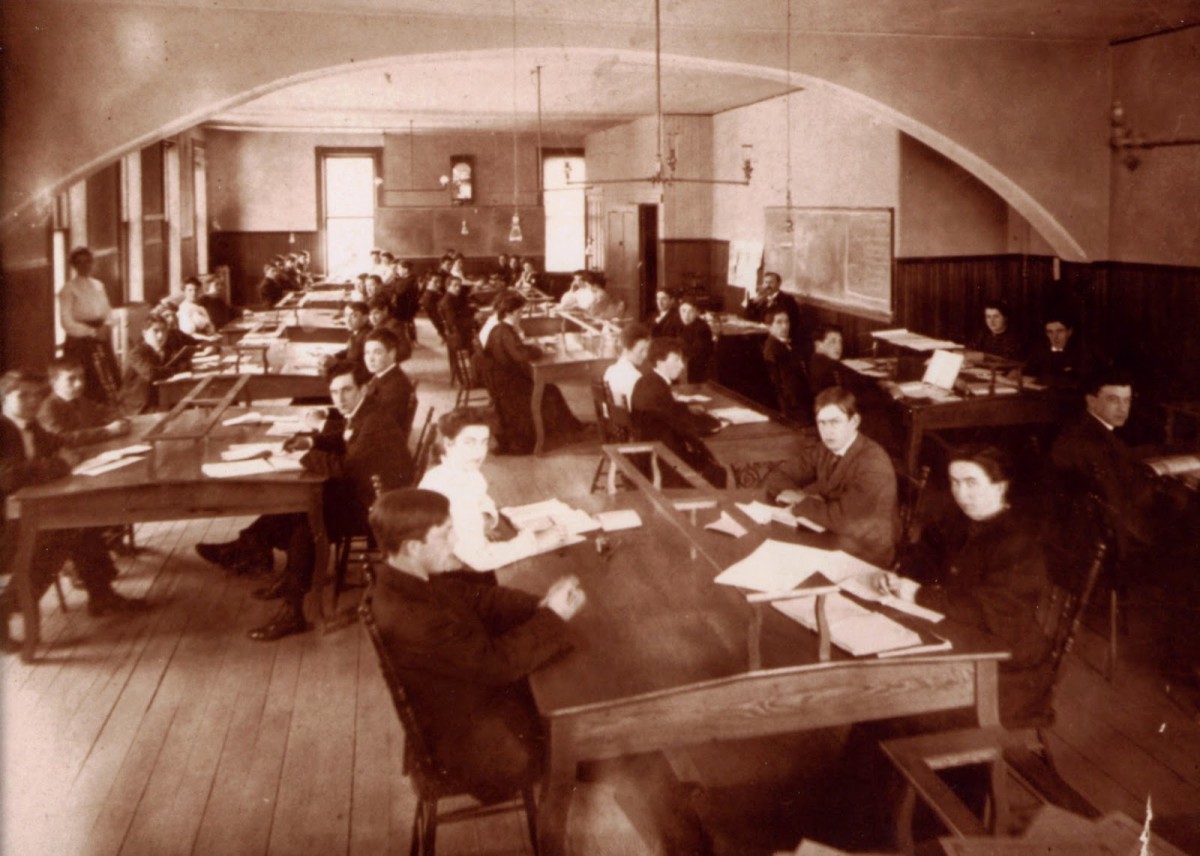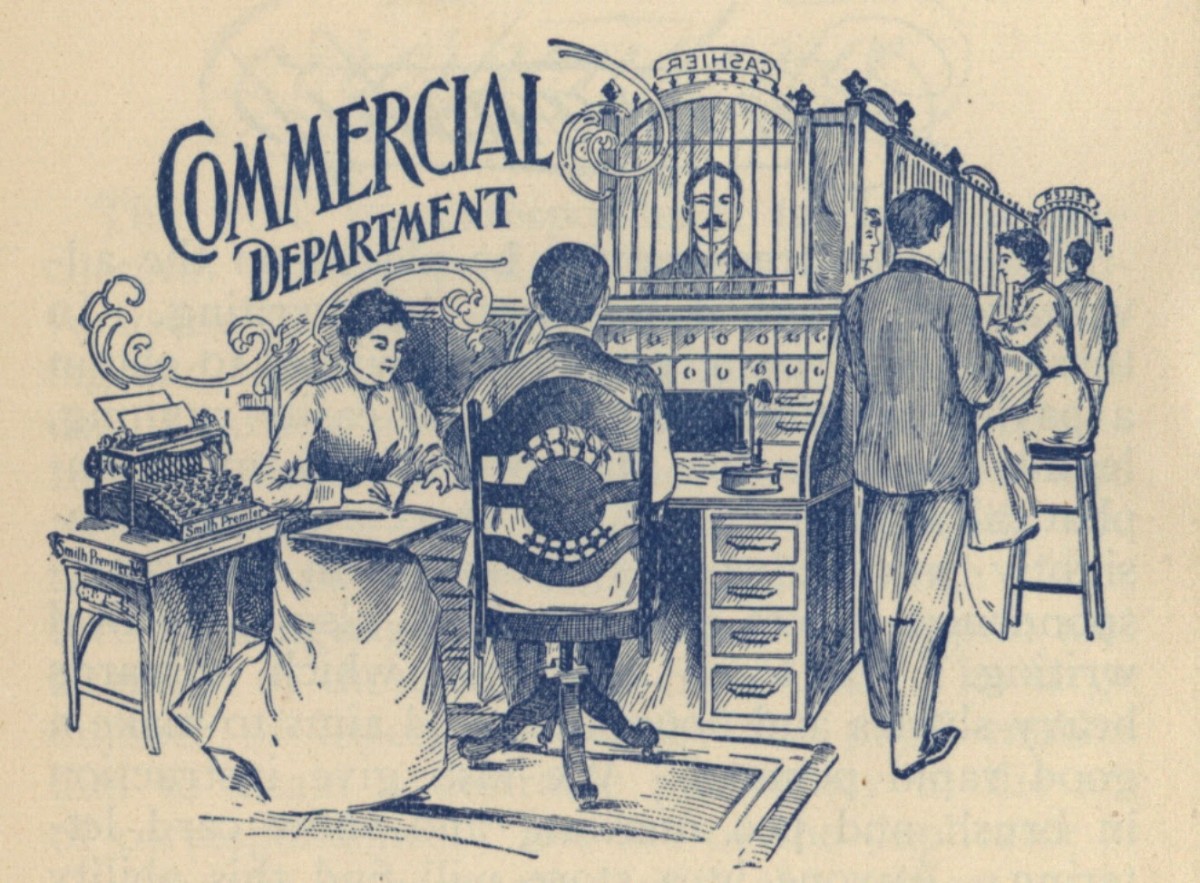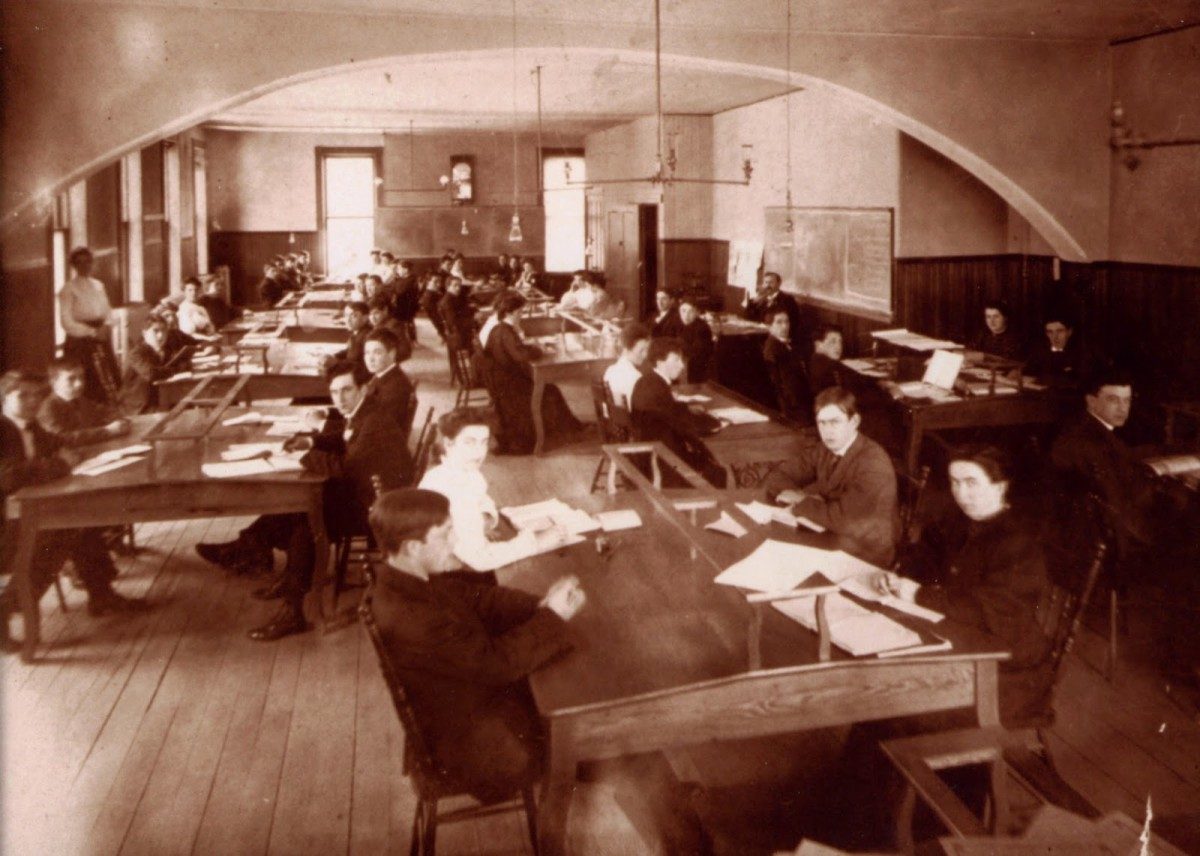NEW RESEARCH INTO THE EARLY HISTORY of Champlain College has
revealed that the College has admitted
women since its establishment in 1878. Champlain was founded as the
Burlington Collegiate Institute and Commercial College, a private, for-profit
school offering professional business training and college prep classes. An advertisement
for the 1878-1879 school year boasts: “This
institution offers unsurpassed facilities to either sex to obtain a thorough
education in either English commercial or classical branches, and prepare
students also for any first-class college.”
revealed that the College has admitted
women since its establishment in 1878. Champlain was founded as the
Burlington Collegiate Institute and Commercial College, a private, for-profit
school offering professional business training and college prep classes. An advertisement
for the 1878-1879 school year boasts: “This
institution offers unsurpassed facilities to either sex to obtain a thorough
education in either English commercial or classical branches, and prepare
students also for any first-class college.”
 |
| A coed classroom at Champlain College (then known as the Burlington Business College), c. 1905 Courtesy Dean Howarth, Class of 1968 |
In the late 1870s, only about thirty percent of American
colleges and universities admitted women. What is more, the very concept of higher education for women –much less coed
higher education –was still very much a matter of debate. In 1873, only
five years before Champlain was established, Boston physician Edward Clarke
argued that higher education for women on a level equal to men’s should be
discouraged, as rigorous intellectual activity would deplete their health and
ability to have children. Clarke proposed that a separate, watered-down
curriculum be designed for women.
colleges and universities admitted women. What is more, the very concept of higher education for women –much less coed
higher education –was still very much a matter of debate. In 1873, only
five years before Champlain was established, Boston physician Edward Clarke
argued that higher education for women on a level equal to men’s should be
discouraged, as rigorous intellectual activity would deplete their health and
ability to have children. Clarke proposed that a separate, watered-down
curriculum be designed for women.
Yet commercial
colleges like Champlain College were a different beast than traditional four-year undergraduate institutions. They provided
a comparatively short-term, economical, and practical course of study that primarily
attracted students from the lower and middle classes. Starting in the 1840s, hundreds
of commercial colleges were established across the country as the growing economy
led to an increased demand for office workers trained in bookkeeping, penmanship
(for legible business correspondence), stenography (shorthand), and later, typing
and telegraph and telephone operation. Commercial
colleges appealed to many nontraditional students seeking entry into the developing
clerical field: young men with limited means
or education, veterans returning from military service, workers aspiring to
move up the career ladder, and, by the 1870s, women who needed to earn a living.
colleges like Champlain College were a different beast than traditional four-year undergraduate institutions. They provided
a comparatively short-term, economical, and practical course of study that primarily
attracted students from the lower and middle classes. Starting in the 1840s, hundreds
of commercial colleges were established across the country as the growing economy
led to an increased demand for office workers trained in bookkeeping, penmanship
(for legible business correspondence), stenography (shorthand), and later, typing
and telegraph and telephone operation. Commercial
colleges appealed to many nontraditional students seeking entry into the developing
clerical field: young men with limited means
or education, veterans returning from military service, workers aspiring to
move up the career ladder, and, by the 1870s, women who needed to earn a living.
Office work, particularly entry-level secretarial positions,
provided new professional opportunities for women – appealing alternatives to the
primary occupations open to them for much of the nineteenth century: domestic service,
sewing, textile machine operation, and teaching. As a result, female students were an important
demographic for commercial colleges, most of which were coed by the 1870s.
provided new professional opportunities for women – appealing alternatives to the
primary occupations open to them for much of the nineteenth century: domestic service,
sewing, textile machine operation, and teaching. As a result, female students were an important
demographic for commercial colleges, most of which were coed by the 1870s.
 |
| Illustration from a 1916 Champlain College [Burlington Business College] brochure Champlain College Archives |
Female enrollment in commercial colleges increased
dramatically in the last three decades of the nineteenth century, mirroring the
growing acceptance of women stenographers, typists, and bookkeepers. Nationally, 15% of commercial college students
were female in 1882, and that had risen to 34% by 1898. In 1885, the earliest
year for which Champlain’s enrollment details are known, only 9 out of 62
students, or 14.5%, were women. In 1898, 41 out of 98 Champlain students, or
42%, were female. It is clear that in the late nineteenth century, Champlain offered important educational opportunities
for women, empowering them to enter the business world and begin to chip away
at its glass ceiling.
dramatically in the last three decades of the nineteenth century, mirroring the
growing acceptance of women stenographers, typists, and bookkeepers. Nationally, 15% of commercial college students
were female in 1882, and that had risen to 34% by 1898. In 1885, the earliest
year for which Champlain’s enrollment details are known, only 9 out of 62
students, or 14.5%, were women. In 1898, 41 out of 98 Champlain students, or
42%, were female. It is clear that in the late nineteenth century, Champlain offered important educational opportunities
for women, empowering them to enter the business world and begin to chip away
at its glass ceiling.
– Erica Donnis, Special Collections Director

